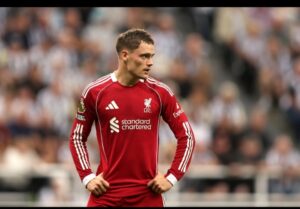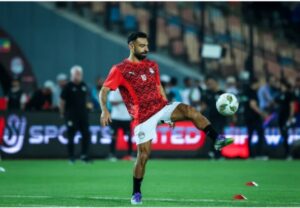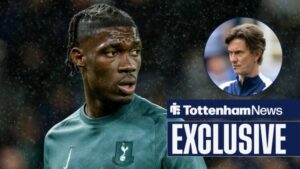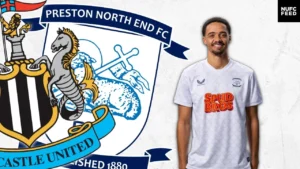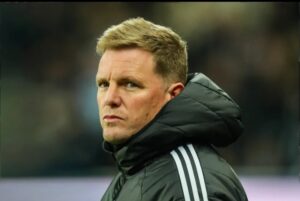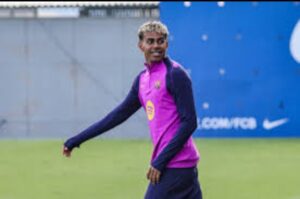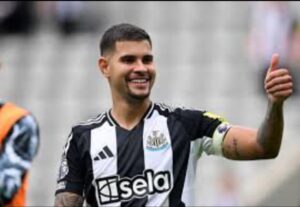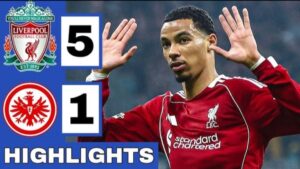
The Los Angeles Lakers, one of the most storied franchises in NBA history, are once again making headlines with a potential blockbuster move that could reshape the Western Conference landscape. According to numerous trustworthy sources, the Lakers are in serious and advanced talks to acquire Rudy Gobert, the four-time NBA Defensive Player of the Year, from the Minnesota Timberwolves. This move, should it materialize, would have far-reaching consequences for both teams and the league at large. For the Lakers, it signals a renewed urgency to contend for a championship in the immediate future, while for the Timberwolves, it suggests a recalibration of their roster construction and long-term strategy.
Rudy Gobert, known for his elite rim protection and ability to anchor a defense, has been one of the most dominant defensive forces in the NBA over the past decade. Standing at 7-foot-1 with a wingspan exceeding 7-foot-9, Gobert has consistently ranked near the top of the league in blocks, rebounds, and defensive rating. He has been the centerpiece of some of the most efficient defenses in modern NBA history, particularly during his tenure with the Utah Jazz before being traded to Minnesota. While Gobert’s offensive limitations have often been a subject of debate, there is no questioning his value on the other end of the floor. His mere presence in the paint alters the game, dissuading opposing players from attacking the rim and forcing teams into inefficient perimeter shots.
The Lakers’ reported interest in Gobert is not surprising given their current roster dynamics and recent playoff shortcomings. With LeBron James still performing at an elite level despite his age and Anthony Davis anchoring both ends of the floor when healthy, the team has been searching for the right mix of players to surround their superstar duo. Last season exposed some of the team’s defensive vulnerabilities, especially in terms of protecting the rim and defending in the pick-and-roll. Adding Gobert would address many of those issues immediately. Pairing him with Davis would create one of the most formidable frontcourts in the league, potentially reminiscent of the twin-tower approach that helped Los Angeles win the 2020 NBA Championship with Davis and Dwight Howard patrolling the paint.
From a tactical standpoint, Gobert’s addition would allow Davis to slide back into his preferred power forward position, reducing the physical toll he endures as a full-time center. Davis has expressed discomfort in the past with consistently playing the five, despite his effectiveness in that role. Gobert’s presence would also enable the Lakers to be more aggressive on the perimeter, knowing they have one of the best shot-blockers in the league backing them up. It could potentially transform the team into a top-five defensive unit, assuming health and chemistry align.
However, acquiring Gobert would not come without significant cost. The Timberwolves gave up a substantial haul to obtain him from the Jazz in the summer of 2022, including multiple first-round picks and a cadre of role players such as Patrick Beverley, Jarred Vanderbilt, and Malik Beasley. In order for the Lakers to secure Gobert now, they would likely need to part with at least one of their key young talents such as Austin Reaves or Rui Hachimura, along with draft compensation and possibly D’Angelo Russell or other salary-matching assets. Whether Lakers GM Rob Pelinka is willing to mortgage a portion of the team’s future to go all-in for the present remains a critical question. LeBron James, entering what could be the final chapter of his illustrious career, has repeatedly emphasized his desire to contend for titles rather than participate in rebuilding efforts. That may be the driving force behind these talks.
On the other side of the equation, Minnesota’s willingness to engage in trade discussions regarding Gobert suggests a level of organizational reassessment. While the Timberwolves enjoyed a successful season in 2024–25, reaching the Western Conference Finals with a powerful lineup built around Anthony Edwards and Karl-Anthony Towns, the fit between Gobert and Towns has been scrutinized ever since the trade. Offensively, spacing has often been an issue when both are on the floor, with neither excelling in creating their own shot from the perimeter or drawing defenders away from the paint. Defensively, while Gobert remains elite, Towns has struggled at times with lateral mobility and switch assignments, forcing Gobert to cover more ground. The chemistry between the two big men has not always been seamless, and in today’s NBA, where versatility and spacing are paramount, a more modern approach might be needed.
Should Minnesota decide to move Gobert, it could signify a commitment to building around the dynamic young core of Edwards, Towns, and point guard Mike Conley. The return from a Lakers deal could also provide much-needed depth and flexibility. For instance, acquiring a guard like Russell or a versatile wing like Hachimura, along with draft picks, would help replenish the assets they spent to get Gobert while maintaining competitive balance. It would also allow Towns to return to the center position full-time, potentially unlocking a more fluid offensive system.
There is also a financial angle to consider. Gobert is under contract through the 2025–26 season with a player option for 2026–27, and he is owed over \$130 million in that span. That level of financial commitment limits a team’s ability to add other pieces unless it is confident in Gobert’s ability to be a game-changing force. The Lakers, given their revenue streams, brand power, and historical willingness to spend, may be more suited to absorb such a contract than most teams. Still, such a move would likely hard-cap them and restrict their flexibility moving forward, especially with Davis also commanding a max salary and the uncertain status of LeBron’s contract moving forward.
Chemistry will also be a major factor if the trade is completed. The Lakers have seen mixed results in recent years with midseason additions or major summer overhauls. While talent acquisition is crucial, fit and cohesion often determine postseason success. Integrating Gobert into the Lakers’ culture and playstyle will take time, especially in a city and environment that comes with intense media scrutiny and championship-or-bust expectations. Gobert, who has spent most of his career in smaller markets like Salt Lake City and Minneapolis, will face a very different reality in Los Angeles, where every move is dissected and public perception can be as impactful as on-court production.
There are also questions about Gobert’s playoff viability. Despite his regular-season dominance, he has faced criticism for his performance in the postseason, where teams have sometimes exploited his lack of foot speed in space. Opponents have used smaller lineups to pull him away from the basket, neutralizing his rim protection and forcing him to guard quicker players on the perimeter. While some of this criticism has been overblown, it remains a concern, especially given the high-level guard play in the Western Conference. The Lakers would need to be strategic in their deployment of Gobert, possibly staggering his minutes or pairing him with lineups that maximize spacing and switchability.
Still, the potential upside is tantalizing. The idea of LeBron James orchestrating the offense with two elite finishers and defenders in Davis and Gobert offers the kind of star-studded frontcourt that could rival any in the league. The Lakers could become a dominant interior team again, controlling the glass, deterring drives, and creating a daunting challenge for any playoff opponent. Moreover, Gobert’s professionalism, durability, and commitment to defense align with the type of veteran presence that championship teams often rely on.
Fans and analysts alike will be watching closely as negotiations unfold. The Lakers, always at the center of league-wide speculation, are no strangers to big moves, and their ambition remains unmatched. If this deal goes through, it will be another bold swing for a franchise that measures success by banners in the rafters, not second-round exits. Gobert may not be the flashiest acquisition, but he could be the piece that solidifies a championship-caliber defense and allows the Lakers to maximize the remaining years of their superstar window.
For Minnesota, the move would be equally consequential. It could mark the beginning of a new era centered fully around Anthony Edwards and a more modern, versatile supporting cast. Shedding Gobert’s salary would create future cap space and allow for more targeted roster moves. The Timberwolves’ willingness to consider this deal, despite the price they paid to acquire Gobert, reflects an organizational flexibility that bodes well for their long-term competitiveness.
As the NBA offseason heats up, all eyes will be on this potential blockbuster. Trades of this magnitude are rare, and when they involve a franchise like the Lakers and a player of Gobert’s stature, the ripple effects are felt across the league. It remains to be seen whether the final details can be ironed out, but the mere fact that serious discussions are underway speaks volumes about both teams’ motivations. In the end, whether this deal materializes or not, it underscores a fundamental truth in today’s NBA: standing still is not an option for teams with championship aspirations. The Lakers, in pursuit of banner number eighteen, appear ready to roll the dice once again.
